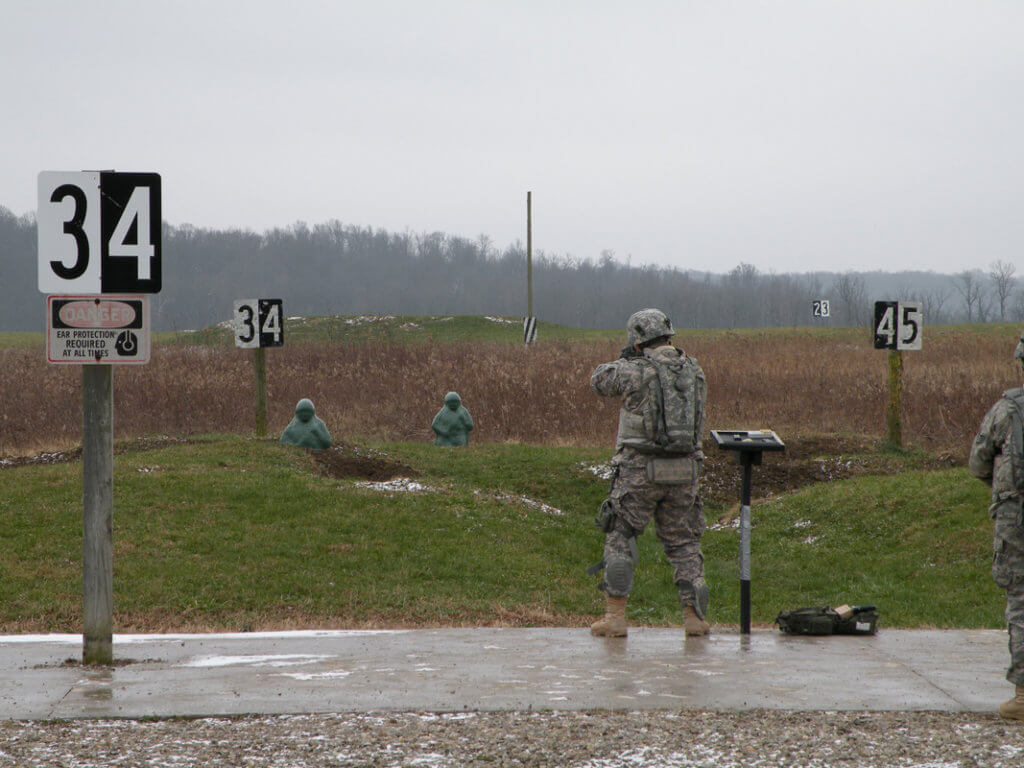Military training often includes a lot of repetition and can sometimes feel boring or frustrating beyond the point of reason. Most often the reason for doing whatever you will continue to do over and over until you can do it with your eyes closed is rarely shared with you.
But while we can’t say everything the military does makes sense most of time, there is a good reason for all that repetition and frustration. And it could save your life.
For example, every time we went into a building while I was at my four-month training at Camp Atterbury in Indiana to prepare for my deployment on a Provincial Reconstruction Team to Afghanistan, we had to clear our weapons.
Mind you, we did not receive live ammunition until we went to the field and that was weeks after we arrived. So, obviously, our weapons were clear of ammunition. But in truth, I wasn’t comfortable clearing an M4 and M9. I had only done it a handful of times when I had been to the range for past weapons-qualification training.
At first, clearing our weapons took time – and felt like a waste of time. But as the weeks dragged on, it became something I could do quickly and easily. Less of annoyance, it was just something we did. It also had the added bonus of making me very comfortable with my weapons.
RELATED: Central America militaries grow stronger through Guard relationships
When I finally got live ammunition, I could focus on hitting the target on the range and not the basic mechanisms of a weapon I had only handled a handful of times.
While I never had to use my weapon in a combat situation, I did carry both a loaded M4 and M9 on every mission off base. I also had my M9 with me everywhere I went on base. And I was comfortable with these weapons. The repetition was one of the reasons why.
Our team also spent a lot of time learning how to spot an Improvised Explosive Device (IED). Multiple trainings in the classroom and in the field could have easily felt like overkill. But this was a real threat, and something we knew we needed to know.
Still, the training environment was much different than actually driving on the streets of Afghanistan because it wasn’t practical to drive at a snail’s pace and check every pile of rocks to see if they were a marker for the enemy. When we came upon an IED that had exploded in the road mere hours or maybe minutes before we arrived, our team saw it long before we were close to it.
And because of our training, we knew exactly the protocol of what to do to ensure that this wasn’t a decoy and were able to make it safely to our destination.
The last thing impactful thing I remember was rollover training. We had to get inside a Humvee wired to a contraption that would make it flip over and over. While waiting for my turn in the vehicle, I had a mini-panic attack.
I was so afraid I would get stuck and not be able to get out while hanging upside down. And while it took a few tries to lift my body weight, plus combat gear, enough to get my seat belt unbuckled, I did and was glad the training was complete. I thought it was in my past, and I wouldn’t have to worry about it again.
But a few days after I arrived in Afghanistan, I learned otherwise.
This time though, I wasn’t scared. I had confidence. And while things changed – it was an MRAP and not a Humvee – I still felt prepared. When we spun around, the atmosphere in the vehicle was even different than before. It was more like a ride at an amusement park than panic and fear.
When the truck stopped in its awkward position, I knew how to brace myself to get out of my seat belt and safely exit the vehicle.
A lot of things I did in my four months of training for my deployment I did multiple times. And while the days dragged on slowly, so slowly it sometimes felt as if it would never end, it did. And as I learned quickly when I arrived in Afghanistan, all those things prepared me for real danger. Nothing was the same, but it all was familiar.
I was ready for the challenges, and the training helped keep everyone on my team safe and able to come home.

